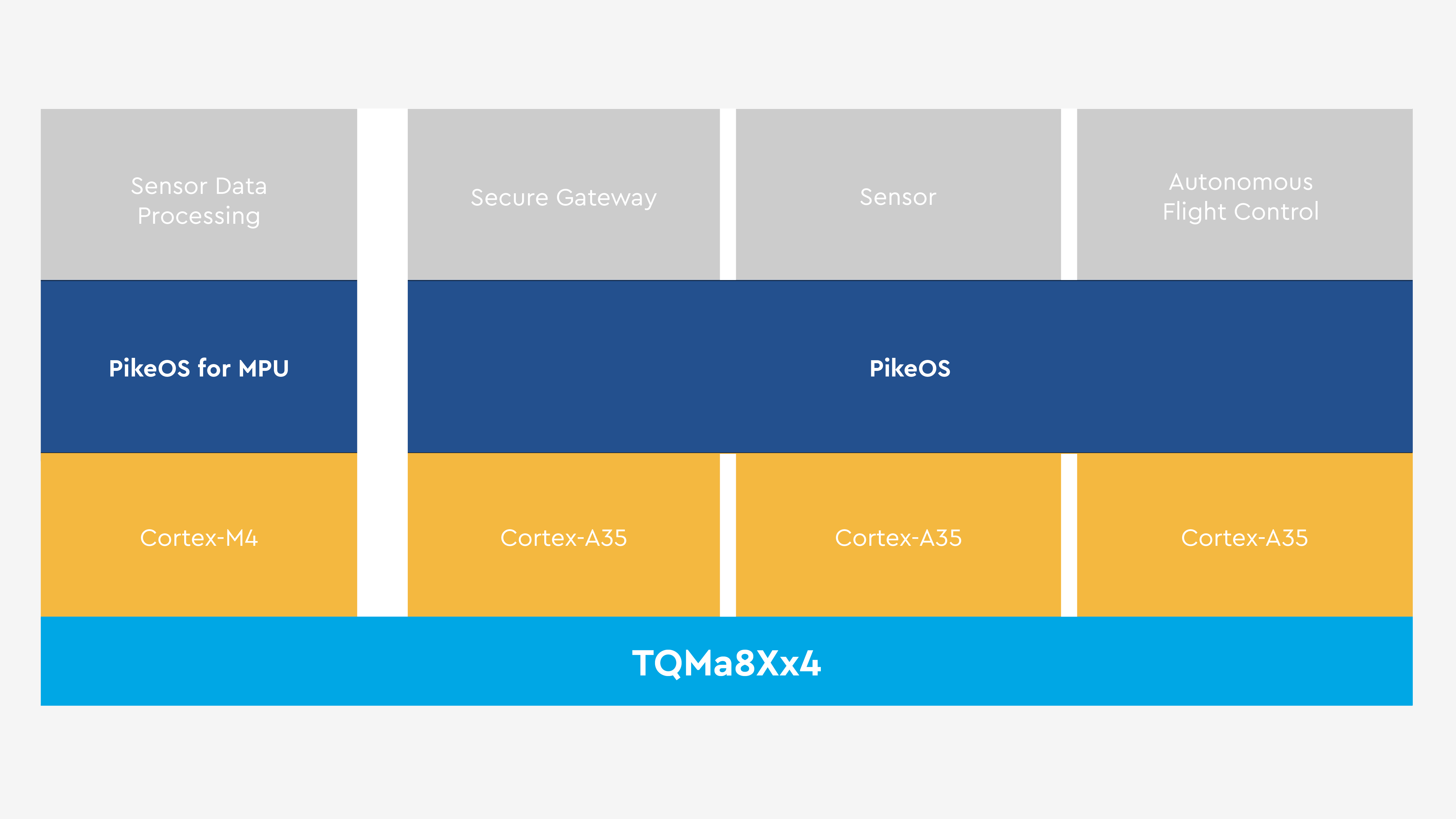TQ-Embedded news
All the latest news about TQ-Embedded and our products as well as press releases can be found in our news overview.
The unmanned aerial vehicle (UAV) and drones
The use in large infrastructuresThe number of commercial drones has been increasing rapidly in recent years. From what was once the hobby area of a few tinkerers, many applications are making more and more sense in the professional field as technology advances. These include drones with infrared sensors that can help in the search for missing persons, as well as those with LiDAR for geological surveying of areas or - widely used - drones with optical sensors or cameras for capturing objects from the air.
With the combination of PikeOS, PikeOS for MPU and a system-on-a-chip (SoC) module from TQ Systems' i.MX8 series, such as the TQMa8Xx4, embedded systems for drones can be conveniently realized. The TQMa8Xx4 offers outstanding scalability of computing power with enough reserves for all eventualities, 4-K graphics support, highest energy efficiency thanks to Cortex-A-35, and a large memory that provides space for the procession of large amounts of data.
The real-time operating system and hypervisor PikeOS provides the basis here for separating applications in the embedded system functionally safely in space and time. For example, mixed-critical flight control can run in parallel with video recording of the drone without one application interfering with the other. Functional safety is guaranteed by pre-certifying PikeOS against the DO-178C avionics safety standard at the highest level, DAL A. An it-secure gateway can run on another PikeOS partition on a core. With its pre-certification against the Common Criteria security standard at level EAL 5+, the PikeOS Separation Kernel (v5.1.3.) also offers cyber security at the highest level.

On customer request after appropriate adjustment by means of Board Support Package, PikeOS for MPU can run as a functionally safe separated partition on the microcontroller (Arm Cortex-M4), which is located on the heterogeneous TQMa8Xx4. PikeOS for MPU takes over important tasks where one prefers a microcontroller over a CPU for reasons of higher-level safety or manageability, among others. This can be, for example, the deterministic processing of large amounts of data, as they occur in video recording.
With the integrated development environment CODEO, such embedded systems, which have the highest demands on safety, determinism or real-time and consolidation, can be created within one tool. PikeOS and PikeOS for MPU do not require a large toolchain, but find a common roof on the Eclipse-based IDE CODEO.
A possible systematic example architecture could include the following applications:
